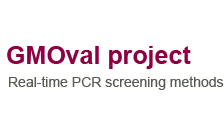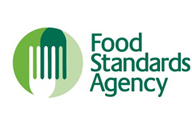WP2: Method completion
Workpackage leader: Sylvia Broeders, WIV-ISP
 During the SAFEFOODERA project GMOseek, several real-time PCR (qPCR) assays targeting markers for the screening of GMO in food and feed samples were developed. These qPCR assays were partially in-house validated by the different developers (WIV-ISP, CRA-W and LGL) [1-3] according to guidelines which have been established in the SAFEFOODERA project GMOseek. The assay acceptance parameters that have been evaluated until now are mainly the specificity and sensitivity (limit of detection, LOD6) [4]. Other parameters were not addressed at that moment and will be evaluated in the GMOval project.
During the SAFEFOODERA project GMOseek, several real-time PCR (qPCR) assays targeting markers for the screening of GMO in food and feed samples were developed. These qPCR assays were partially in-house validated by the different developers (WIV-ISP, CRA-W and LGL) [1-3] according to guidelines which have been established in the SAFEFOODERA project GMOseek. The assay acceptance parameters that have been evaluated until now are mainly the specificity and sensitivity (limit of detection, LOD6) [4]. Other parameters were not addressed at that moment and will be evaluated in the GMOval project.
For this purpose, three assays were selected for completion of the in-house validation, i.e. the bar/pat TaqMan® duplex, the tE9 TaqMan® qPCR and a corresponding TaqMan® assay for pea (to control the presence of the natural donor organism of the tE9 terminator), and the SYBR®Green Cry3Bb qPCR assay. Additional parameters that have to be assessed are the limit at which the assay detects the presence of the specific target in 95% of the cases (LOD95%), the robustness using an orthogonal experiment and in some cases a specificity test on an extended list of materials.
For the completion of the in-house validation, genomic DNA will be extracted from part of the purchased / produced powder materials and will be characterised. This characterisation will consist of checking if the positive and negative materials give the expected signals, if there is contamination with an interfering GM event and an inhibition test. The observations from this characterisation will be communicated to WP1 and the rest of the powder materials will be used in WP3.
The results obtained during the in-house assay validation will be analysed by WP1. These will be used to decide whether the selected assays are fit for purpose and will continue to feasibility studies and collaborative trials. In addition, the WP2 developers will provide a Standard Operating Protocol for each of their assays to be used for the WP3 full validation experiments.

Robustness: The robustness of a method is a measure for its capacity to remain unaffected by small, but deliberate deviations from the experimental conditions described in the procedure.

Validation: After completion of the in-house validation, the methods will be sent to testing laboratories for a full validation.
References:
[1] S Broeders, E Barbau-Piednoir, E Vandermassen, F Debode, M Mazzara and N Roosens. New SYBR®Green methods targeting promoter sequences used for screening of several GM events pending for authorisation in Europe (2013). European Food Research and Technology, DOI 10.1007/s00217-013-1910-4
[2] F Debode, E Janssen, G Berben (2013) Development of ten new screening PCR assays for GMO detection targeting promoters (pFMV, pNOS, pSSuAra, pTA29, pUbi, pRice actin) and terminators (t35S, tE9, tOCS, tg7). European Food Research and Technology Journal. DOI: 10.1007/s00217-013-1921-1
[3] Huber, I., Block, A., Sebah, D., Debode, F., Morisset, D., Grohmann, L., Berben, G., Štebih, D., Milavec, M., Žel, J., Busch, U. Development and validation of a pentaplex, triplex and duplex real-time PCR assay for the simultaneous detection of the GMO screening elements P35S, TNOS, pat, bar and the CTP2-CP4-epsps construct. Journal of Agricultural and Food Chemistry (in preparation)
[4] Association Française de Normalisation (AFNOR) (2008) Standard XP-V-03-044: Critères de validation intra-laboratoire pour les méthodes de détection et quantification de séquences d'acides nucléiques spécifiques. AFNOR. 2008. Saint-Denis La Plaine, France.
Project GMOVal
The central aim of the project is to make available to the GMO laboratories community new validated real-time PCR screening methods for an improved GMO detection via the implementation of the matrix approach.



